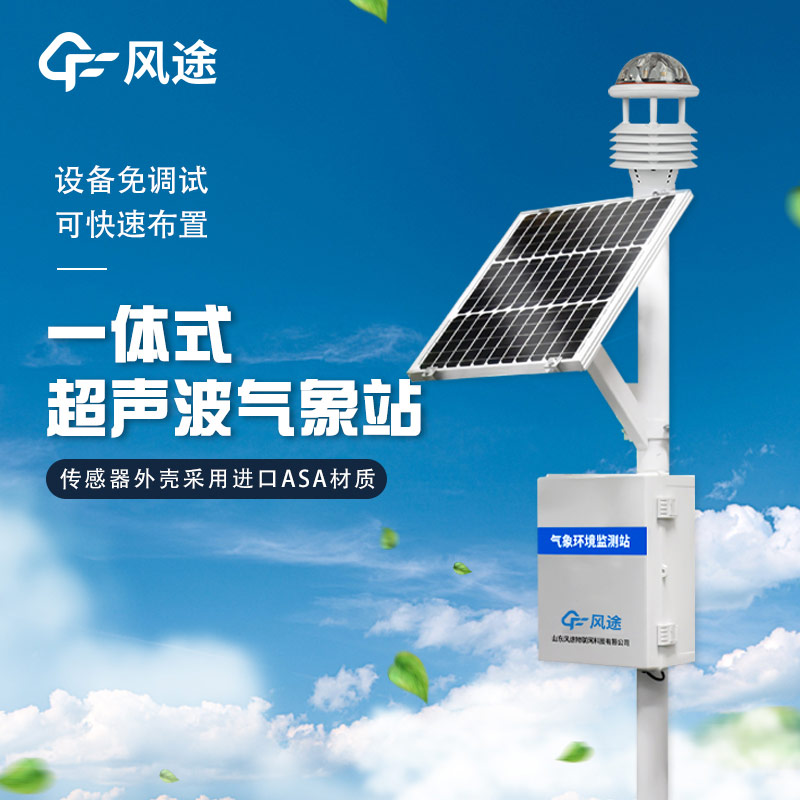Tianqiong Sensor IOT Technology Co., Ltd
Sales Manager:Ms. Emily Wang
Cel,Whatsapp,Wechat:+86 15898932201
Email:info@fengtutec.com
Add:No. 155 Optoelectronic Industry Accelerator, Gaoxin District, Weifang, Shandong, China

Sales Manager:Ms. Emily Wang
Cel,Whatsapp,Wechat:+86 15898932201
Email:info@fengtutec.com
Add:No. 155 Optoelectronic Industry Accelerator, Gaoxin District, Weifang, Shandong, China
time:2025-04-23 09:42:08 source:Weather Station viewed:240 time
When traditional mechanical weather stations monitor wind speed and direction, they encounter a difficult problem. The wind speed sensor usually consists of wind cups and an axis, and the wind direction sensor relies on mechanical components such as a wind vane. When these mechanical components are exposed outdoors for a long time, they will be affected by factors such as wind, sunlight, rain, and wear. Therefore, they are prone to problems such as damage and aging, leading to a decrease in measurement accuracy, and require regular maintenance and replacement. Moreover, due to the inertia of the mechanical components, the sensor does not respond sensitively enough to changes in wind speed and direction. Especially in situations with low wind speeds or frequent changes in wind direction, there is a certain lag in the measurement results, making it difficult to accurately reflect the real-time wind speed and direction information.
In order to overcome the limitations of mechanical weather stations, developers have developed ultrasonic wind speed and direction sensors. These sensors measure wind speed and direction based on the ultrasonic time difference method. They utilize the principle that the propagation speed of ultrasonic waves in the air is affected by wind speed and determine the wind speed and direction by calculating the time difference of ultrasonic waves propagating in different directions.
Since it has no mechanical moving parts, there are no problems such as wear and aging. It is highly durable, has a long service life, and a low maintenance cost. More importantly, the ultrasonic wind speed and direction sensor has higher sensitivity, a low starting wind speed, and can achieve zero wind speed measurement. It can also monitor changes in wind speed under low wind speed conditions and has a fast response speed.
The Ultrasonic weather station uses an ultrasonic wind speed and direction sensor. In addition to monitoring wind speed and direction, it integrates multiple meteorological detection functions into the sensor and can simultaneously measure meteorological elements such as wind speed, wind direction, temperature, humidity, air pressure, and rainfall. It can even expand other monitoring items according to needs, such as atmospheric pressure, light, and ultraviolet radiation. This highly integrated design significantly reduces the number of devices required for the weather station and the space occupied, lowers the installation complexity, and is very convenient to use.
The FT-CQX5 is a highly integrated automatic weather observation device. It uses a five-element integrated sensor and can accurately monitor wind speed, wind direction, temperature, humidity, and air pressure simultaneously. The wind speed measurement range is 0 - 60m/s, and the accuracy can reach ±0.1m/s. The wind direction range is 0 - 360°, with an accuracy of ±2°. The measurements of temperature, humidity, and air pressure are also accurate and reliable.
Its cleverly designed hidden ultrasonic probe on the top cover effectively avoids the interference of snow and rain accumulation and natural wind obstruction.
It comes standard with three methods: GPRS, Bluetooth, and 485 to USB conversion, meeting the needs of various scenarios. The power supply is flexible, supporting solar power supply and equipped with a lead-acid battery. The charging controller has an MPPT (Maximum Power Point Tracking) function, which increases the efficiency by 20%. Moreover, it is easy to install, and the sensor can be directly sleeved on the top of the two-meter carbon steel bracket.

Wheat seedling conditions are usually classified into strong seedlings, robust seedlings (including first - class and second - class seedlings), and weak seedlings (third - class seedlings). For different seedling conditions, differential management measures need to be taken during key growth stages...
As environmental pollution becomes increasingly complex, the limitations of traditional air monitoring methods are gradually becoming apparent. The national ambient air monitoring network has a limited number of stations and high costs, and the method of using points to represent the whole area resu...
The Photovoltaic Weather Station under Tianqiong enables precise, real-time, and continuous monitoring. Specifically designed for the photovoltaic industry, it accurately detects key meteorological parameters that affect photovoltaic power generation. In particular, regarding solar radiation, it can...
Soil temperature and moisture are key factors influencing crop growth and ecological environment changes. Accurate detection of these data is of great significance for agricultural production, ecological research, and disaster prevention. Currently, multiple detection methods are available.The soil...